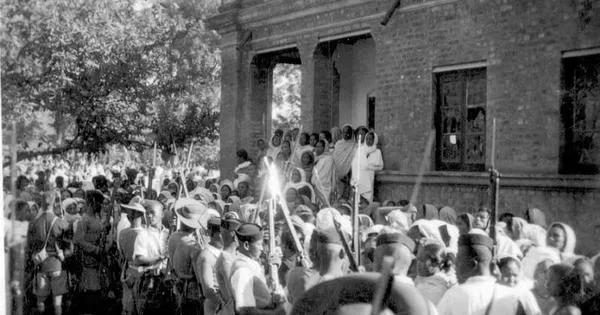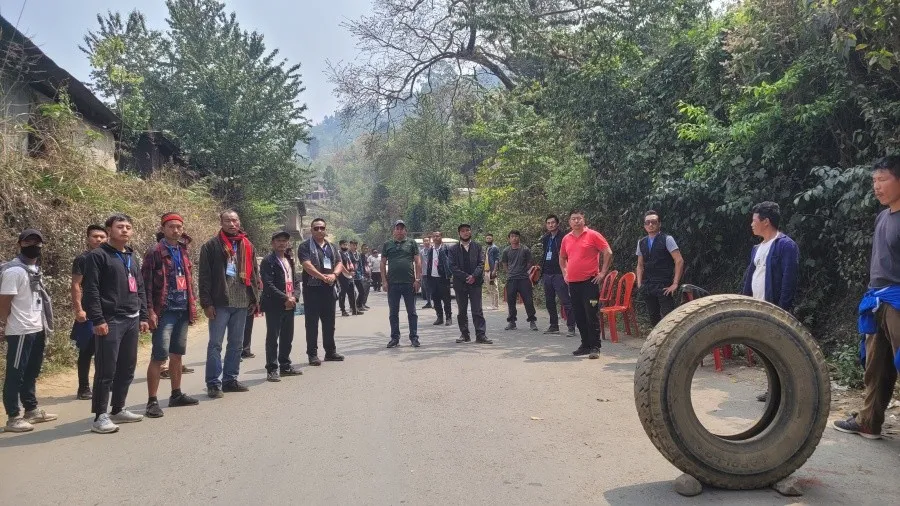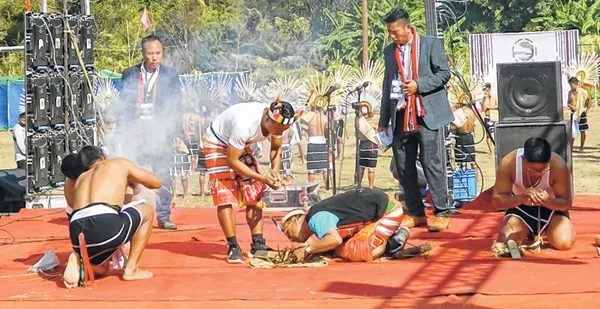Last Updated on April 27, 2023 by SPN Editor
Lamyanba Irabot said, “It was not an agitation of the Women, but a movement of the people.” Nupi Lan points to mass awakening in the State.
There is a need for good historical work in Manipur. A civilization with 2000 years of history lacks accurate, genuine, and well-researched work to feel us proud. Though several attempts have been done in the past, it is not up to the expectations of readers and researchers.
Most of the historical work lacks authentic, evidence and references to support the writings. Late Karam Manimohan Singh’s work on “NUPI LAN (Women’s War of Manipuri)” is the complete history of Nupi Lan in Manipur.
This book tells us not only the event and its consequences from 1904 to 1939, but the factors leading to the great uprisings from 1851 onwards.
It is rightly said that interests and dedication to one’s pursuit are more significant than one’s choice of career. Though an English Lecturer, having obtained his Ph. D. in English from the Banaras Hindu University, Manimohan’s work on Manipur history is incredible. Present-day historians cannot imagine writing such a grotesque work as Karam Manimohan Singh.
In this book, the author highlights the vice and abuses in the administration as were practiced by the reigning Rajas of Manipur. The British policy of “non-intervention” in the internal management of the state no doubt enhanced the Raja’s undesirable habits and ruthless antipathy which were all the time manifested towards the poor and the downtrodden, to grow up with a boundless gigantic size.
The first Nupi Lan in 1904 was clearly the handiwork of Rajkumars who do not like the selection of Churachand Singh as Raja of Manipur. These Rajkumars were inciting the women folk to resist the British government.
The historical demonstration of the Manipuri women for their great dislike of the absolutist manner on the part of the British officials occurred in 1904 when Lt-Col. H St. P Maxwell issued an order to temporarily resuscitate the Lalup (a forced laborer where males between the ages of 17-60 would work freely for 10 days in every forty days duration) system for the purpose of making the inhabitants of Imphal town rebuild the Assistant Political Agent’s bungalow which was burnt down.
Maxwell attributed the burning of the Imphal town, instigated by the Rajkumars of the late ruling clan, as a mark of showing their great dislike of Raja Churachand who was independent, and by breaking the traditional lie of primogeniture appointed by the British.

The women were led by the simple thought that their husbands had refused to undergo the Lalup labor which now become an illegal one and thereby caused the hardships of punishment o the women’s lot.
On the historic day of 5th October, 1904, as soon as the political Agent returned from his morning walk he found some 3000 Manipuri women gathering in his compound, and in a very few minutes, another 2000 more had arrived all commenced shouting at once. Maxwell once wrote down a very sorry remark on this event as follows:
“It is very difficult to know how to treat a mob of wild cats like this, but I shall take care to disperse them next time before they become numerous.”
An important factor, which aroused feelings of disgust in the Manipuri against the Marwari merchants, was that the latter was not allowed to export rice from Manipur with the condition to stop it when the price of rice rose to Rs. 3 per mound. But certain Marwaris were granted the pass to export rice to meet Government purposes even during the time of prohibition. The grievance was that many of the Marwari merchants, without at least considering the needs of the public had always tried to avoid the restriction under cover of the Red Pass.
The most important event of the year 1939 was the outbreak in December which is now known as the Nupi Lan or Women’s War. The first uprising took place on 12th December 1939 when a huge number of women came to the State Office and insisted that the President of the Manipur State Darbar, Mr. TA Sharpe should immediately forbid the export of rice.
A crowd numbering 4000, mostly women confined Mr. Sharpe and the Civil Surgeon Mr. PH Cummins and some other officers in the Telegraph office and refused to allow the latter to leave, even to take food. The Commandant of the 4th Battalion of Assam Rifles, Major GFX Bulfield, came to rescue the officers. However, he was also prevented from leaving the compound by the women.
The situation on 12th December was so dangerous that the troops were called in to clear the compound. In clearing the compound, 21 women were injured either by stones or by rifle butts. One Indian officer and 7 other ranks of the Assam Rifles were injured. All were treated by the Civil Surgeon and three other medical officers who were present in the Telegraph office.
The injuries to the troop were caused by stones. Some of the women were injured by the stones thrown from the back of the crowd and others by rifle butts in resisting the troops. There were not any bayonet wounds, although the troops had fixed bayonets.
After the 12th incident, on 13th and 14th December, there were large crowds of women parading the streets and visiting the rice mills. The Manipuri and the Marwari mill owners gave chits promising they would not work their mills.
The impact of the uprising was so great that it severely influence the state administration.
Mr E.F. Lydall remarked that,
“Coming on top of this loss of confidence, the Women’s war caused a breakdown of the Administration, manifested mainly by the inadequacy, both in numbers and efficiency of the State Police.”
Karam Manimohan Singh tells more deeply about the causes, the impacts, and the reforms in the state. The war which was started as an agitation by the women of Imphal against the export of rice was gradually taken over by the Nikhil Manipuri Mahasabha, under the leadership of Hijam Irabot Singh and it is used as a tool for fermenting the agitation on the Congress lines.
The book, Nupi Lan is divided into thirteen chapters and a conclusion. The writer takes pain in adding a few pages for additional information on the Chronology of events, a Glossary of words, 15 sets of appendixes, and most importantly the photos of the brave women who lead the women’s war of 1939. Nupi Lan is a huge success work for the author who published earlier two more books on Manipur history – Hijam Irabot Singh and Political Movements in Manipur (1989) and History of the Christian Missions in Manipur and Other Neighboring States (1991).
Nupi Lan, Karam Manimohan Singh
Published by K Premlata Devi
Hard and Bound cover, 331 pages
Price Rs 400
1 thought on “Nupi Lan (Women’s War of Manipur) | Book Review”
Comments are closed.


[…] Also Read : Nupi Lan (Women’s War of Manipur) | Book Review […]